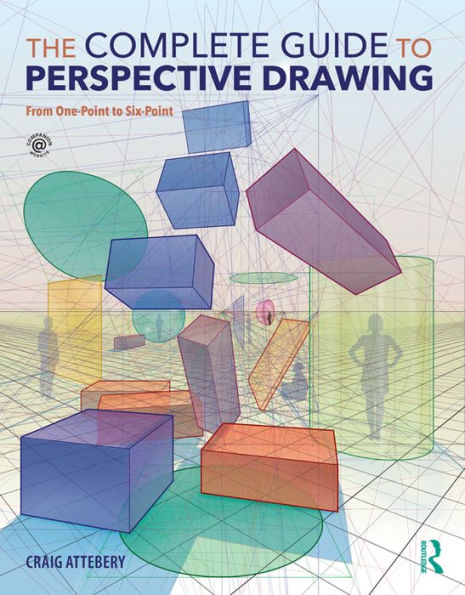Computers can calculate perspective angles and create a drawing for us, but the spontaneity of mark making, the tactile quality of a writing surface, the weight of a drawing instrument, and the immediacy of the human touch are sensations that keep traditional drawing skills perpetually relevant. The sensuality and convenience of the hand persists and will survive as a valuable communication tool, as will the need to accurately express your ideas on paper. As a professional, understanding the foundations of drawing, how we process images, and how we interpret what we see are principal skills. Understanding linear perspective enables artists to accurately communicate their ideas on paper. The Complete Guide to Perspective Drawing offers a step-by-step guide for the beginner as well as the advanced student on how to draw in one-point through six-point perspective and how to make scientifically accurate conceptual illustrations from simple to complex situations.
Computers can calculate perspective angles and create a drawing for us, but the spontaneity of mark making, the tactile quality of a writing surface, the weight of a drawing instrument, and the immediacy of the human touch are sensations that keep traditional drawing skills perpetually relevant. The sensuality and convenience of the hand persists and will survive as a valuable communication tool, as will the need to accurately express your ideas on paper. As a professional, understanding the foundations of drawing, how we process images, and how we interpret what we see are principal skills. Understanding linear perspective enables artists to accurately communicate their ideas on paper. The Complete Guide to Perspective Drawing offers a step-by-step guide for the beginner as well as the advanced student on how to draw in one-point through six-point perspective and how to make scientifically accurate conceptual illustrations from simple to complex situations.

The Complete Guide to Perspective Drawing: From One-Point to Six-Point
370
The Complete Guide to Perspective Drawing: From One-Point to Six-Point
370eBook
Related collections and offers

Product Details
| ISBN-13: | 9781315443546 |
|---|---|
| Publisher: | Taylor & Francis |
| Publication date: | 04/17/2018 |
| Sold by: | Barnes & Noble |
| Format: | eBook |
| Pages: | 370 |
| File size: | 36 MB |
| Note: | This product may take a few minutes to download. |
